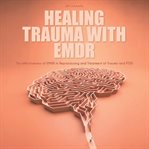Details
PUBLISHED
Made available through hoopla
EDITION
DESCRIPTION
1 online resource (1 audio file (56 min.)) : digital
ISBN/ISSN
LANGUAGE
NOTES
Read by Ashton Haugen
We all have a natural emotional healing process, just as we do a natural physical healing process within us. When we get a wound, our bodies' natural healing process takes care of it. When emotionally painful events occur in our lives, we usually manage to overcome them and move on with our lives. On the other hand, a cut does not always heal until it has been cleaned and an antibiotic has been applied. Similarly, when something emotionally upsetting occurs, the brain's processing system isn't always able to absorb it and put it into the context of our entire lives without assistance. Sometimes we are completely unaware of what is going on. Although the image of the incident may not come to us consciously, we may feel unworthy, sad, afraid, or nauseous. We may be unaware that we are being swamped with dysfunctionally stored material from the past. We may act in ways we later regret and not wholly comprehend why. The EMDR method recognizes that you aren't reacting on purpose; the triggered memories are at the root of your actions that aren't consistent with who you are now. EMDR can assist the brain's processing system repair emotional wounds in the same way that an antibiotic ointment can help cure a cut. It's still your own internal process conducting the healing; EMDR simply "jump starts" it when it's needed and speeds it up. Once the isolated "land mine" of trauma has been reprocessed using EMDR, it is neutralized, meaning it will no longer go off and flood into the present. It's woven into the fabric of your existence, so it appears to be over and cannot derail you from your current state of bliss. The information appears to be stimulated, and the brain can reprocess the situation due to eye movements or other bilateral stimulation. Eye movements are only a tiny part of EMDR. In processing traumatic memories, current concerns, or future fears, integrates imagery, beliefs, emotions, and physical sensations
Mode of access: World Wide Web







